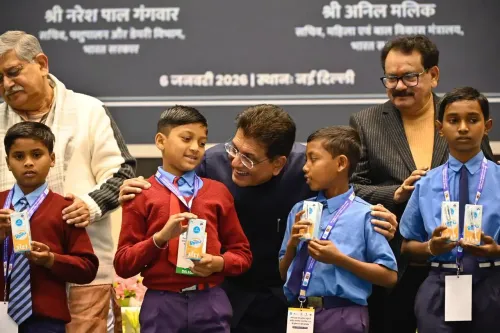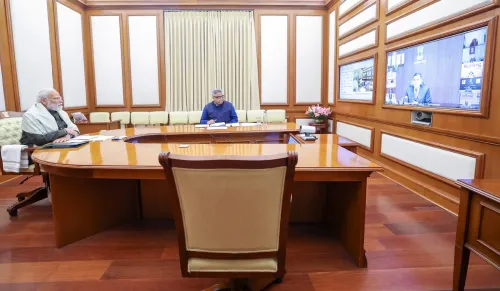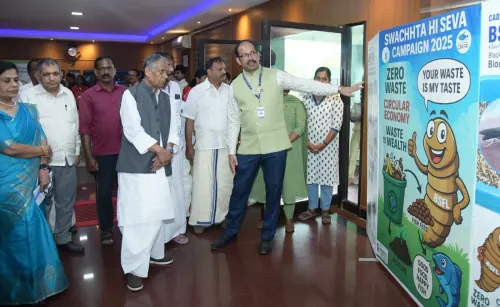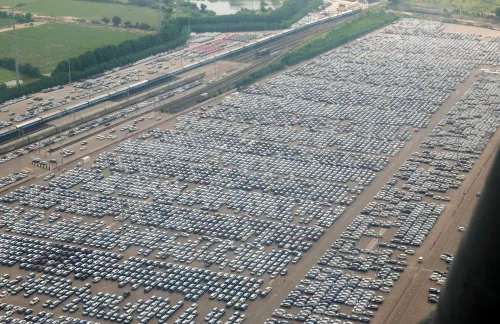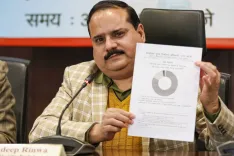India's Green Energy Transmission Capex Set to Reach Rs 1 Lakh Crore in Next Two Financial Years

Synopsis
Key Takeaways
- Projected capex of Rs 1 lakh crore for 2026-27.
- Double the previous capex of Rs 50,000 crore.
- 80-85% of capex from three major developers.
- Significant renewable capacity addition expected.
- Timely execution crucial for project success.
New Delhi, Feb 27 (NationPress) The inter-state transmission system sector is projected to witness a capital expenditure (capex) of approximately Rs 1 lakh crore over the financial years 2026 and 2027. This significant investment is primarily aimed at facilitating the evacuation of renewable energy, which is double the capex of Rs 50,000 crore recorded between the financial years 2024 and 2025, as reported by Crisil on Thursday.
Throughout the construction phase, transmission projects encounter various execution risks, including right of way (ROW) challenges, forest clearances, and supply chain disruptions. Nonetheless, the report indicates that the credit profiles of developers remain bolstered by robust cash flows and solid funding visibility.
An analysis of three major developers, which are expected to account for 80-85 percent of the anticipated capex, supports this outlook.
Enhancing the transmission infrastructure is essential, especially with the rapid growth in renewable capacity addition. Crisil Ratings predicts an addition of 65-75 GW of solar and wind capacities over the fiscal years 2026 and 2027. Timely planning and commissioning of transmission capacities are crucial, given that the execution period for a transmission project typically spans 2-4 years, which is twice as long as that for renewable energy projects.
“In light of the pressing need for transmission capacity expansion, project awards surged to Rs 1.6 lakh crore during the fiscal years 2024 and 2025,” stated Manish Gupta from Crisil Ratings.
“We have observed that these projects generally face an average delay of about 10 months in commissioning, with some projects experiencing delays exceeding 18 months. Considering these delays, we estimate that transmission connectivity will be established for up to 60 GW of potential renewable capacity by fiscal 2027,” he elaborated.
To facilitate quicker execution, the Ministry of Power has revised the land compensation guidelines for ROW associated with transmission projects. For instance, in June 2024, land compensation for the tower base area for high-voltage transmission lines was increased to 200 percent from 85 percent of land value, enhancing compensation for landowners and thus minimizing ROW-related delays.
Furthermore, given the urgent need to scale up the transmission sector, ensuring an uninterrupted supply chain—especially for sub-station equipment such as transformers and high-voltage direct current (HVDC) components—will be vital for timely project execution.
Anand Kulkarni, Director at Crisil Ratings, noted that “we expect these projects to yield a return on equity of 11-14 percent.”
Despite the sensitivity of returns to project delays, developers are in a strong position to manage increasing capex intensity.
“The equity requirements are well supported by recent fundraising efforts totaling around Rs. 12,500 crore through equity capital markets, along with players’ estimated free cash flows of approximately Rs. 30,000 crore over the next two fiscal years from their existing operational portfolios,” Kulkarni explained.


